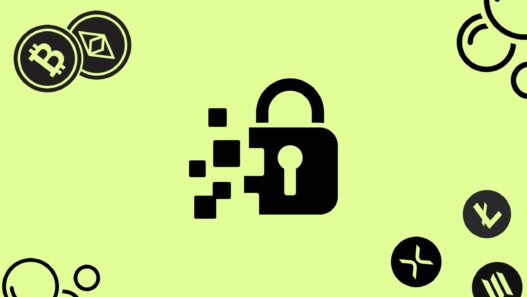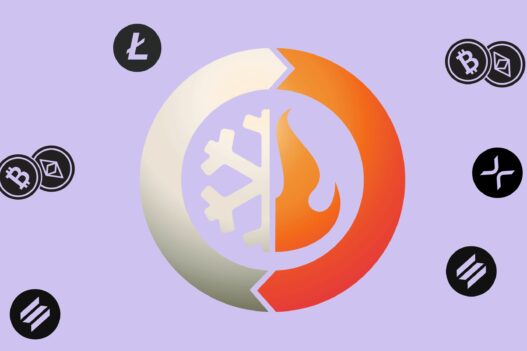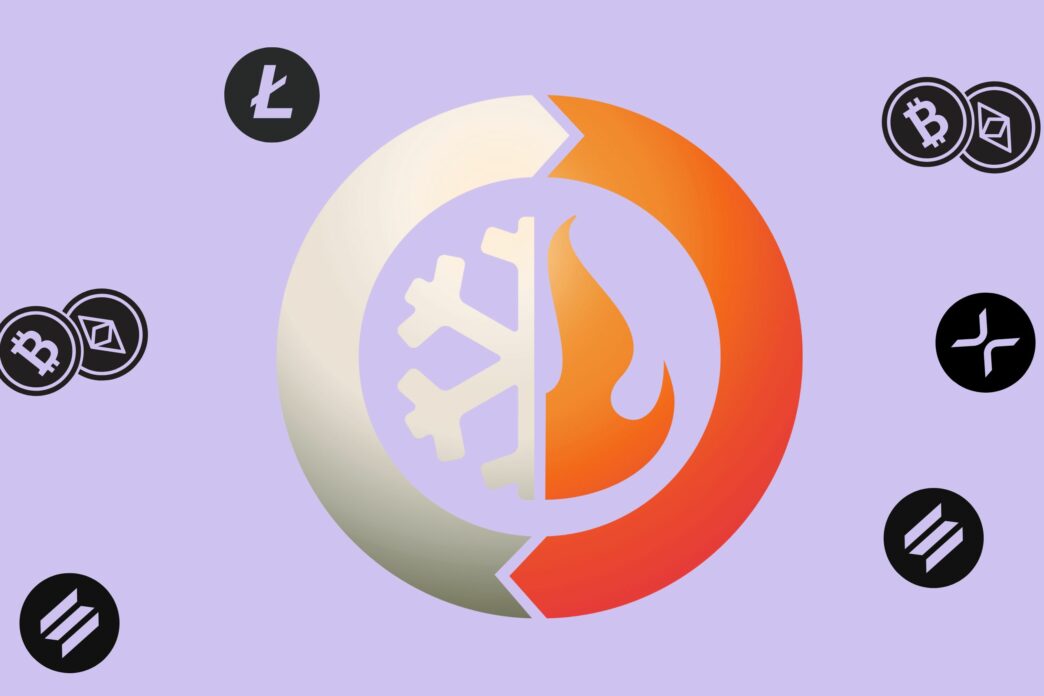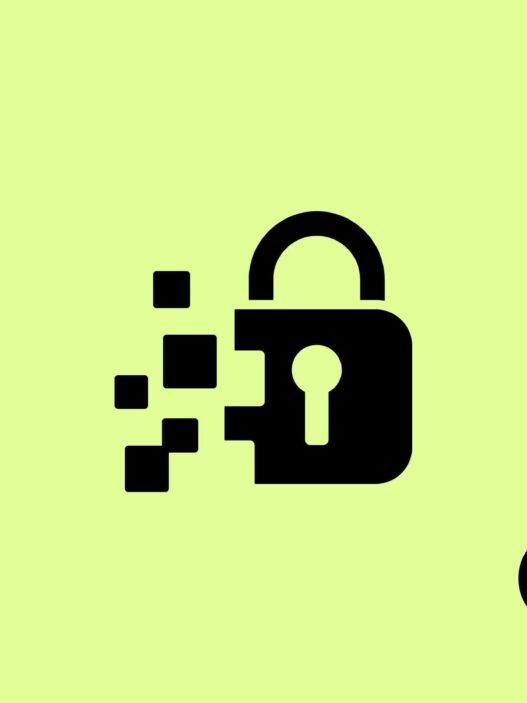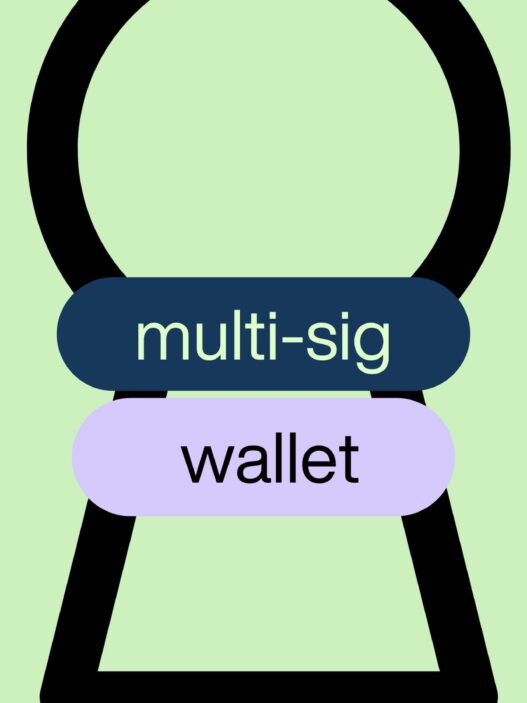Picture this: You’ve just stacked a fat pile of Bitcoin (BTC) or snagged a rare NFT, and now you’re wondering—where do I keep this digital gold safe? Or maybe you’re the type who loves flexing your crypto gains on X, sending quick tips in ETH to your crew. Either way, one thing’s clear: your crypto wallet choice can make or break your blockchain journey. Enter the showdown of cold and hot crypto wallets—two powerhouse options that every crypto fan needs to master. Whether you’re HODLing for the long haul or trading like a Wall Street wolf, this guide has you covered. We’re breaking down what cold and hot crypto wallets are, how they stack up, when to use them, and which ones rule in 2025. Ready to level up your crypto game? Let’s roll!
Crypto Wallets 101:
The Basics You Need to Know
Before we pit cold and hot crypto wallets against each other, let’s get the basics locked down. A crypto wallet isn’t a physical wallet stuffed with BTC bills. It’s a tool—software or hardware—that holds your private keys and public addresses, letting you interact with the blockchain. Your private key? That’s the secret code proving you own your funds. Your public address? Think of it as your crypto “bank account number” for sending and receiving coins.
Why do wallets matter? Because in crypto, “not your keys, not your coins” isn’t just a catchy X hashtag—it’s gospel. Without a wallet, your assets are stuck on exchanges like Coinbase or Binance, where hacks (think Mt. Gox’s $460M loss in 2014) or outages can wipe you out. Wallets give you control, whether you’re stacking sats or swapping memecoins.
Here’s the first fork in the road: custodial vs. non-custodial:
– Custodial wallets (e.g., exchange accounts) mean a third party holds your keys—convenient but risky.
– Non-custodial wallets? You’re the boss, holding your keys yourself.
That’s where cold and hot crypto wallets come in, splitting the non-custodial world into two camps: online speed demons and offline fortresses. Let’s dive deeper.
Hot Crypto Wallets:
Always Online, Always Ready
First up: hot crypto wallets. These bad boys are all about staying connected. A hot wallet is any wallet that’s linked to the internet—think software running on your phone, laptop, or browser. They’re built for action, letting you send, receive, or trade crypto faster than you can say “to the moon.”
What Makes a Wallet “Hot”?
Hot wallets live online, whether it’s a mobile app like Trust Wallet, a desktop program like Exodus, a browser extension like MetaMask, or even your exchange account (Coinbase, Binance). According to Investopedia, their defining trait is accessibility—your private keys are stored in software that’s always ready to ping the blockchain.
Types of Hot Crypto Wallets
- Mobile Wallets: Trust Wallet, Coinbase Wallet—perfect for tapping into DeFi on the go.
- Desktop Wallets: Exodus, Electrum—great for managing funds from your laptop.
- Browser Extensions: MetaMask, Phantom—your gateway to Web3 and NFT marketplaces.
- Exchange Wallets: Built into platforms like Binance—handy but custodial by default.
How They Work
Setup’s a breeze: download the app, generate or import a private key (often via a 12-24 word seed phrase), and you’re live. Need to swap ETH for SOL on Uniswap? Tap your MetaMask extension. Sending USDT to a friend? Open Trust Wallet and hit send. Forbes notes that hot wallets sync with the blockchain in real-time, making them the go-to for traders and daily users.
Benefits of Hot Crypto Wallets
- Convenience: Instant access—send crypto from a coffee shop or stake on PancakeSwap in seconds.
- Speed: No unplugging or manual steps—just click and go.
- Free (Mostly): Most hot wallets cost nada to download, unlike hardware options.
Risks of Hot Crypto Wallets
Here’s the catch: online = exposed. Kaspersky warns that hot wallets are prime targets for hackers—phishing scams, malware, or exchange breaches can drain your funds. Remember the 2021 Poly Network hack? $600M gone from hot wallets. Coinbase’s admits: “If your device is compromised, your hot wallet could be too.”
Hot Wallet Vibes
Hot wallets are the life of the crypto party—fast, flashy, and perfect for flexing on X. But they’re not invincible. Keep reading to see how they stack up against their chilly cousins.
Cold Crypto Wallets:
Offline Fortresses for Your Funds
Now, let’s flip the script to cold crypto wallets. These are the ultimate security champs, keeping your private keys offline and out of hackers’ reach. Think of them as the crypto equivalent of a vault buried under your house—tough to crack but not exactly grab-and-go.
What Makes a Wallet “Cold”?
A cold wallet is any storage method that’s disconnected from the internet. The main purpose of cold wallet is isolation—your keys never touch an online device unless you choose to use them. It’s all about minimizing attack surfaces.
Types of Cold Crypto Wallets
- Hardware Wallets: Ledger Nano X, Tangem, Trezor Model T—USB or smartcard devices with secure chips.
- Paper Wallets: Private keys printed or written on paper—old-school but effective.
- Air-Gapped Devices: Computers or drives never connected to the net (e.g., a dedicated Raspberry Pi).
- Steel Backups: CryptoSteel or Billfodl—engrave your keys for fireproof, waterproof protection.
How They Work
Cold wallets generate your private key offline (often with a seed phrase) and store it in a physical medium. Want to spend? Plug in your Ledger, sign the transaction, then unplug. Paper wallets? Scan a QR code or type the key manually. BitGo explains: “Cold storage requires intentional access,” making it a fortress by design.
Benefits of Cold Crypto Wallets
- Top Security: Offline = unhackable (unless you mess up).
- HODLing Heaven: Perfect for stashing BTC or ETH for years.
- Peace of Mind: No sleepless nights over exchange hacks.
Risks of Cold Crypto Wallets
Nothing’s perfect. Lose your hardware wallet without a backup? Bye-bye funds. Paper wallet torn by your cat? Tough luck. So unfortunately cold wallets sacrifice convenience for security. They’re not built for quick trades, but rather to allow you to keep your treasure safely.
Cold Wallet Vibes
Cold wallets are the silent guardians of crypto—low-key, unbreakable, and ready to protect your stack while you HODL through the bear market. But how do they fare against hot wallets?
Cold vs. Hot Crypto Wallets: The Head-to-Head Showdown
Time for the main event: cold vs. hot crypto wallets. Here’s a side-by-side look at how they stack up, plus a table to keep it visual.
| Feature | Hot Crypto Wallet | Cold Crypto Wallet |
| Connectivity | Always online | Offline unless in use |
| Security | Vulnerable to hacks/phishing | Near-impenetrable when stored right |
| Convenience | Instant access | Requires setup/physical interaction |
| Cost | Usually free | $50-$200+ for hardware |
| Best For | Trading, daily use | Long-term storage, big holdings |
Key Differences
- Connectivity: Hot wallets live on the internet; cold wallets shun it like a vampire avoids sunlight.
- Risk Profile: Hot wallets are easy target for the hackers—Forbes cites that in 2022’s hot wallet thefts reached $2B. Cold wallets? Hackers can’t touch what’s offline.
- Accessibility: Hot wallets win for speed; cold wallets take effort but deliver safety.
Real-World Examples
- Hot Wallet Fails: On February 21, 2025, a group of hackers from North Korea pulled off the largest cryptocurrency heist in history after stealing $1.5 billion in Ethereum tokens from the Dubai-based cryptocurrency exchange ByBit.
- Cold Wallet Wins: HODLers who kept BTC on a Ledger through 2017’s boom slept easy while exchanges burned.
The Warm Wallet Twist
BitGo and Fireblocks throw a curveball with “warm wallets”—semi-online setups for institutional use. Think cold storage with hot access for pros. We’ll detour into that next, but for most of us, it’s cold vs. hot all the way.
The Warm Wallet Wildcard:
A Quick Detour
Before we move on, let’s talk warm wallets—the hybrid stepchild of cold and hot crypto wallets. These are “partially connected” solutions, blending offline key storage with online access for specific tasks. Think of it as a cold wallet with a hotline to the blockchain—secure but not fully isolated.
What’s a Warm Wallet?
Warm wallets keep private keys offline but use software to sign transactions without exposing them. They’re big in institutional custody (e.g., BitGo’s warm storage for exchanges) where speed and security must coexist.
Why It Matters
For retail users, warm wallets are niche—too complex for beginners, not cold enough for HODLers. But they’re a nod to the future, where cold and hot crypto wallets might merge into smarter hybrids.
When to Use a Hot Crypto Wallet
Hot wallets shine when you’re living the crypto fast life.
Here’s when to grab one:
Ideal Scenarios
- Trading: Swapping BTC for altcoins on KuCoin? Hot wallets like MetaMask are your MVPs.
- DeFi: Staking on Aave or farming on SushiSwap needs instant access—Trust Wallet’s got you.
- Daily Spending: Tipping DOGE on X or buying coffee with BTC? Hot wallets make it seamless.
Who It’s For
- Active traders chasing pumps.
- NFT flippers bidding on OpenSea.
- Social media crypto flexers sending quick vibes.
Safety Tips
- Enable 2FA (Google Authenticator, not SMS).
- Keep balances low—move big stacks to cold storage.
- Watch for phishing—fake MetaMask popups are sneaky.
We believe hot wallets are for spending, not saving. Perfect for the hustle, but don’t sleep on security.
When to Use a Cold Crypto Wallet
Cold wallets are your HODLing heroes.
Here’s when they rule:
Ideal Scenarios
- Long-Term Storage: Parking BTC for the 2030 bull run? Ledger’s your fortress.
- Big Holdings: Got $10K+ in ETH? Cold wallets keep it untouchable.
- Peace of Mind: No stress over hacks—sleep like a baby.
Who It’s For
- HODLers dreaming of Lambos.
- Investors with serious stacks.
- Security buffs who’d rather die than trust an exchange.
Success Tips
- Backup your seed phrase—steel plates like CryptoSteel beat paper.
- Test recovery—send a small amount first.
- Store smart—split devices across safe spots (home, bank vault).
Cold wallets are the safest way to HODL. They’re your crypto bunker—slow but invincible.
In the cryptocurrency world, “HODL” refers to the strategy of holding onto your investments for the long term, regardless of market fluctuations, and it originated as a misspelling of “hold” in a 2013 Bitcoin forum post.
“I AM HODLING”.
Top Hot Crypto Wallets in 2025:
Picks for the People
Ready to go hot? Here are the best hot crypto wallets lighting up 2025, based on features, buzz, and Forbes/Coinbase insights:
1. MetaMask
- Why It Rules: DeFi king—connects to Ethereum, Polygon, and more via browser or mobile.
- Pros: Free, open-source, NFT-friendly.
- Cons: Phishing target—watch your clicks.
- Vibe: The trader’s go-to since 2016.
2. Trust Wallet
- Why It Rules: Binance-backed, mobile-first, supports 100+ chains.
- Pros: Staking, DApp browser, easy UI.
- Cons: No desktop version yet.
- Vibe: Perfect for altcoin degens.
3. Coinbase Wallet
- Why It Rules: Beginner-friendly, ties to Coinbase exchange.
- Pros: Multi-coin support, slick design.
- Cons: Custodial roots scare purists.
- Vibe: Your crypto training wheels.
These hot wallets keep you in the game—fast, free, and ready to roll.
Top Cold Crypto Wallets in 2025:
Fortresses to Trust
For the cold crew, here are the best cold crypto wallets dominating 2025:
1. Ledger Nano X
- Why It Rules: Bluetooth-enabled, supports 5,500+ coins.
- Pros: Mobile app, secure chip, coin variety.
- Cons: $149 price tag stings.
- Vibe: The HODLer’s gold standard.
2. Trezor Model T
- Why It Rules: Open-source, touchscreen, Shamir backup.
- Pros: Transparent code, premium feel.
- Cons: $219—ouch for budget HODLers.
- Vibe: Security nerds’ dream.
3. Tangem Wallet
- Why It Rules: Seedless, card-based, NFC tap-to-use.
- Pros: Sleek, affordable ($50-$90), 6,000+ coins.
- Cons: No display—trust your phone.
- Vibe: The stylish sleeper hit.
These cold wallets are your crypto castles—built to last and protect.
How to Choose Between Cold and Hot Crypto Wallets
Stuck deciding? Here’s how to pick your cold or hot crypto wallet:
Factors to Consider
- Risk Tolerance: Paranoid about hacks? Go cold. Chill with small sums? Hot’s fine.
- Goals: Trading daily? Hot. HODLing for years? Cold.
- Tech Comfort: Love gadgets? Cold hardware’s cool. App-only life? Hot’s your jam.
Quick Quiz
- Send crypto weekly? Hot.
- Stashing $5K+? Cold.
- Both? Use a hybrid strategy—hot for play, cold for savings.
We suggest you first have a though why you need a crypto wallet and how do you use it. Then match your wallet to your lifestyle. Test both—start hot, scale to cold as your stack grows.
Safety Tips for Cold and Hot Crypto Wallets
Safety’s non-negotiable. Here’s how to lock down your cold and hot crypto wallets:
Hot Wallet Tips
- Avoid public Wi-Fi—hackers lurk.
- Update software—patches fix vulnerabilities.
- Use hardware 2FA (e.g., YubiKey)—and avoid SMS as it’s proven as the weakest link for breaches.
Cold Wallet Tips
- Hide backups—safes beat sock drawers.
- Test recovery—don’t wait for disaster.
- Dodge scams—fake Ledger sites are real (X chatter confirms).
General Vibes
- Seed phrases? Engrave them—paper burns.
- Multi-sig? Extra layer for big stacks.
Security is active, not passive. Stay sharp, fam!
The Future of Cold and Hot Crypto Wallets
What’s next for cold and hot crypto wallets? X buzz and web trends point to big shifts in 2025:
Trends
- Biometrics: Fingerprint or face ID on wallets (Ledger’s teasing it).
- Wearables: Tangem Ring vibes—crypto on your finger.
- DeFi Integration: Hot wallets like MetaMask doubling as cold storage hubs.
Predictions
- Hot wallets get AI-smarts for scam detection.
- Cold wallets go sleeker—think smartcards everywhere.
Your Wallet, Your Power
There you have it— cold and hot crypto wallets, dissected and served up hot. Hot wallets keep you fast and flexible, perfect for trading and flexing. Cold wallets lock your funds in a digital vault, unbeatable for HODLing and big stacks. The choice? Yours—match it to your crypto life. Grab a MetaMask for the hustle, a Ledger for the haul, or both to rule them all. Hit up X, drop your wallet pick, and let’s get this convo popping. Your keys, your power—own it in 2025!
FAQs: Quick Answers for the Crypto Curious
What’s the safest cold crypto wallet?
Ledger Nano X or Trezor Model T—secure chips, proven track records.
Can a hot wallet be hacked?
Yup—if your device’s compromised or you fall for phishing.
How do I switch between cold and hot wallets?
Send funds via blockchain—hot to cold for storage, cold to hot for spending. Test small first!







